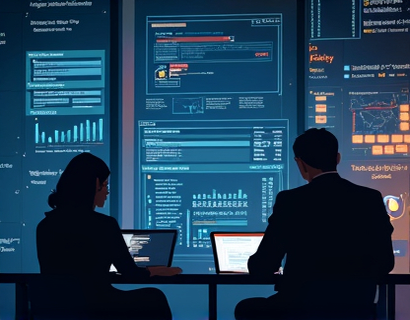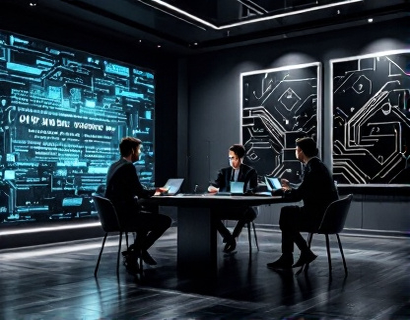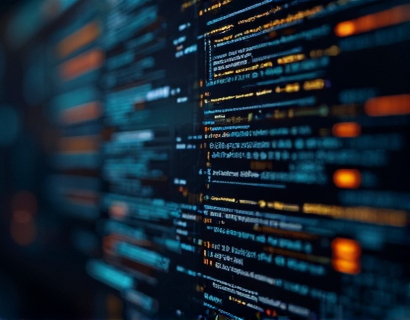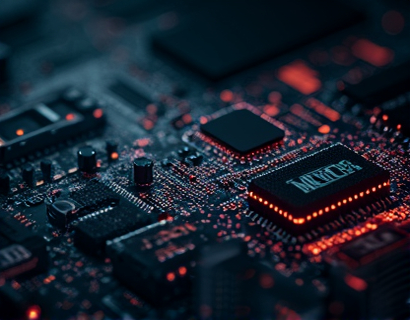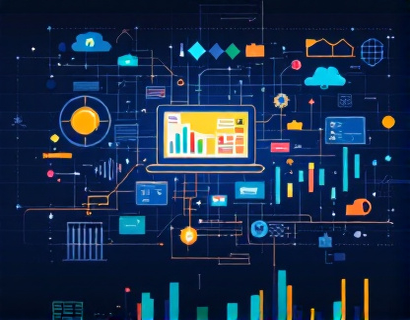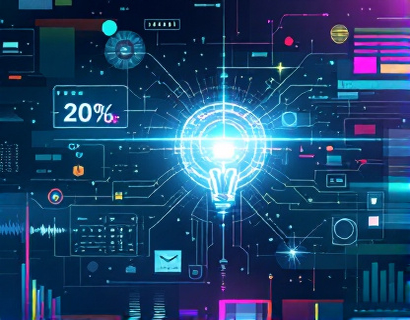Unlocking Blockchain Scalability: Advanced Layer 2 Solutions for EVM-Enabled Development
In the rapidly evolving landscape of blockchain technology, scalability has emerged as a critical challenge for developers and innovators. The Ethereum Virtual Machine (EVM) has been a cornerstone for decentralized applications (dApps) and smart contracts, but its inherent limitations in transaction throughput and processing speed have necessitated the exploration of advanced Layer 2 (L2) solutions. These solutions aim to enhance scalability, security, and efficiency, paving the way for faster, more secure, and cost-effective decentralized applications. This article delves into the intricacies of L2 solutions specifically tailored for EVM-enabled development, highlighting their transformative potential in blockchain innovation.
Understanding the EVM and Its Limitations
The EVM is a runtime environment for smart contracts, enabling the execution of code in a trustless and decentralized manner. While it has been instrumental in the growth of decentralized finance (DeFi), non-fungible tokens (NFTs), and other blockchain applications, its design imposes significant constraints. The EVM processes transactions in a sequential manner, leading to bottlenecks as network usage increases. Each transaction requires gas, a unit of measurement for computational effort, which can become prohibitively expensive during peak times. Moreover, the block time on Ethereum is approximately 13 seconds, limiting the number of transactions that can be processed per second.
These limitations have spurred the development of Layer 2 solutions, which operate on top of the primary blockchain (Layer 1) to offload some of the computational load. L2 solutions do not rewrite the blockchain's core protocol but instead build upon it to achieve higher transaction throughput and lower costs. For EVM-enabled development, these solutions offer a pathway to overcome the inherent scalability issues of the EVM, enabling the creation of more robust and efficient dApps.
Types of Layer 2 Solutions
Several L2 solutions have been proposed and implemented to address the scalability challenges of the EVM. These can be broadly categorized into state channels, sidechains, and rollups. Each type offers unique advantages and trade-offs, making them suitable for different use cases.
State Channels
State channels allow multiple parties to conduct a series of transactions off the main blockchain, with the final state being submitted to the blockchain once the channel is closed. This approach significantly reduces the number of transactions that need to be processed on the EVM, thereby lowering gas costs and increasing transaction speed. For EVM-based dApps, state channels are particularly useful for applications that involve frequent, low-value transactions, such as gaming or micropayments. However, state channels require all participants to be online simultaneously, which can be a limitation for certain use cases.
Sidechains
Sidechains are independent blockchains that are linked to the main blockchain through a two-way peg. They allow assets to be transferred between the main chain and the sidechain, enabling off-chain processing of transactions. This decoupling reduces the load on the EVM and allows for higher transaction throughput on the sidechain. Sidechains can be customized to suit specific requirements, offering flexibility in terms of consensus mechanisms and smart contract capabilities. However, they introduce additional complexity in terms of security and interoperability.
Rollups
Rollups are one of the most promising L2 solutions for EVM-enabled development. They come in two main varieties: Optimistic Rollups and ZK Rollups. Both methods aim to batch multiple transactions off the main chain and submit a single transaction to the EVM, significantly reducing gas costs and increasing transaction speed. Optimistic Rollups assume that all transactions are valid and only challenge invalid transactions, while ZK Rollups use zero-knowledge proofs to verify the validity of transactions off-chain. This approach provides stronger security guarantees and higher scalability, making rollups an attractive option for building scalable dApps.
Benefits of Layer 2 Solutions for EVM-Enabled Development
The adoption of L2 solutions brings numerous benefits to EVM-based blockchain development, addressing the key challenges of scalability, security, and efficiency.
Enhanced Scalability
By offloading a significant portion of the transaction load to L2 layers, EVM-based dApps can handle a much higher volume of transactions without compromising performance. This is particularly crucial for applications that require real-time processing, such as DeFi protocols and gaming platforms. The reduced congestion on the EVM leads to faster transaction confirmation times and a smoother user experience.
Reduced Costs
One of the most immediate benefits of L2 solutions is the reduction in gas fees. Since only the final state of transactions needs to be submitted to the EVM, the cost per transaction is significantly lower. This makes blockchain applications more accessible to a broader audience and reduces the barrier to entry for developers and users alike. Lower gas fees also encourage more frequent usage, fostering greater adoption and engagement.
Improved Security
While L2 solutions operate independently of the EVM, they do not compromise security. In fact, many L2 methods, such as ZK Rollups, enhance security through advanced cryptographic techniques. Optimistic Rollups, while assuming validity, provide mechanisms to challenge and rectify invalid transactions, ensuring the integrity of the blockchain. The reduced load on the EVM also minimizes the risk of attacks and vulnerabilities, contributing to a more secure ecosystem.
Increased Efficiency
Efficiency is a critical factor in the success of blockchain applications. L2 solutions streamline the development process by allowing developers to build more complex and feature-rich dApps without the constraints of the EVM's limited resources. The ability to process transactions off-chain and batch them into single EVM transactions reduces the computational overhead, leading to faster development cycles and more efficient deployment of smart contracts.
Implementing Layer 2 Solutions in EVM-Enabled Development
For developers looking to leverage L2 solutions in their EVM-based projects, several steps and considerations are essential for a successful implementation.
Choosing the Right L2 Solution
The first step is to evaluate the specific requirements of the application and select the most appropriate L2 solution. Factors to consider include transaction throughput, gas costs, security guarantees, and interoperability with existing EVM-based infrastructure. For instance, if the application involves frequent, low-value transactions, state channels or Optimistic Rollups might be the best fit. For applications requiring strong security and scalability, ZK Rollups could be more suitable.
Integration with EVM Smart Contracts
Seamless integration between L2 layers and EVM smart contracts is crucial for a cohesive user experience. Developers need to ensure that the L2 solution supports the necessary EVM compatibility, allowing smart contracts to interact with off-chain state and transactions. This often involves using bridges or wrappers that facilitate the transfer of assets and data between the main chain and L2 layers. Proper integration ensures that the benefits of L2 solutions are fully realized without compromising the functionality of the dApp.
Security Best Practices
Security remains a top priority when implementing L2 solutions. Developers should adhere to best practices such as thorough auditing of smart contracts, implementing robust challenge mechanisms for Optimistic Rollups, and ensuring the integrity of zero-knowledge proofs in ZK Rollups. Regular security assessments and staying updated with the latest research in L2 security can help mitigate potential vulnerabilities.
Community and Ecosystem Support
Engaging with the broader blockchain community and leveraging existing L2 ecosystems can provide valuable insights and resources for developers. Participating in forums, contributing to open-source projects, and collaborating with other developers can accelerate the development process and foster innovation. The growing ecosystem around L2 solutions offers a wealth of tools, libraries, and frameworks that can simplify the implementation and enhance the functionality of EVM-based dApps.
Future Prospects and Innovations
The landscape of Layer 2 solutions is rapidly evolving, with ongoing research and development pushing the boundaries of what is possible. Future innovations are likely to focus on interoperability, cross-chain capabilities, and the integration of Layer 2 solutions with emerging blockchain technologies. The development of more advanced cryptographic techniques and the exploration of new consensus mechanisms will further enhance the scalability, security, and efficiency of L2 layers.
As the demand for scalable and cost-effective blockchain solutions continues to grow, the role of L2 solutions in EVM-enabled development will become increasingly significant. By embracing these advancements, developers can build more robust, efficient, and user-friendly dApps, driving the next wave of blockchain innovation.








